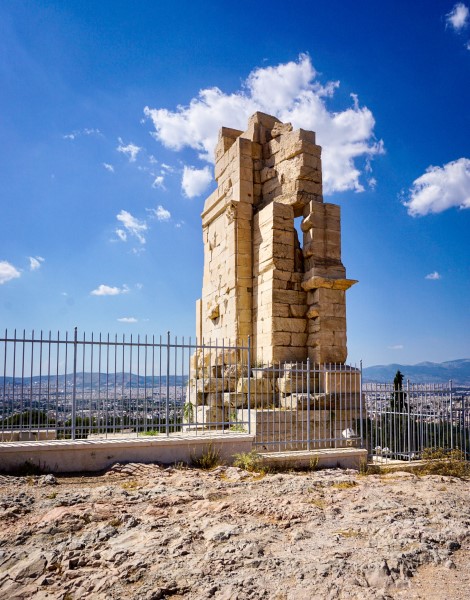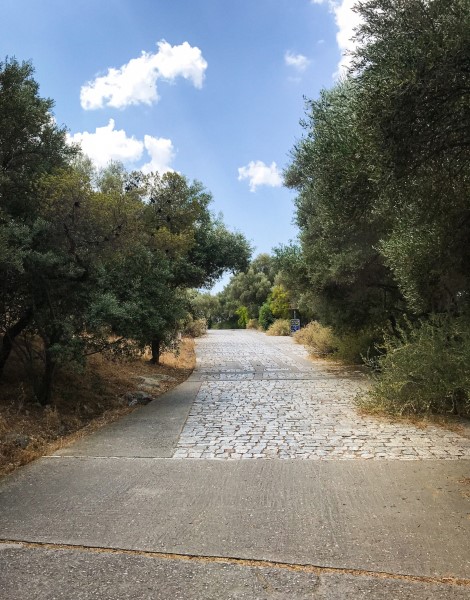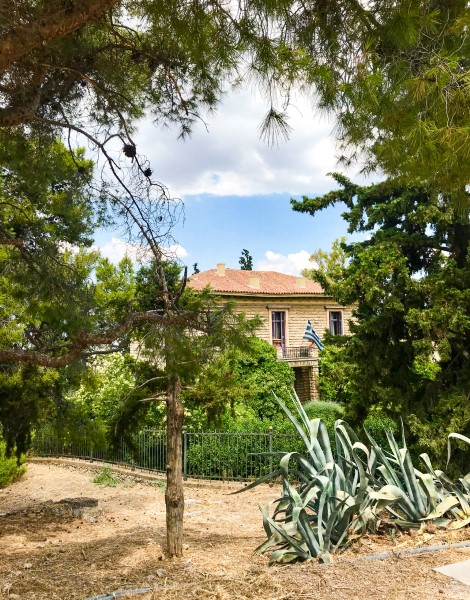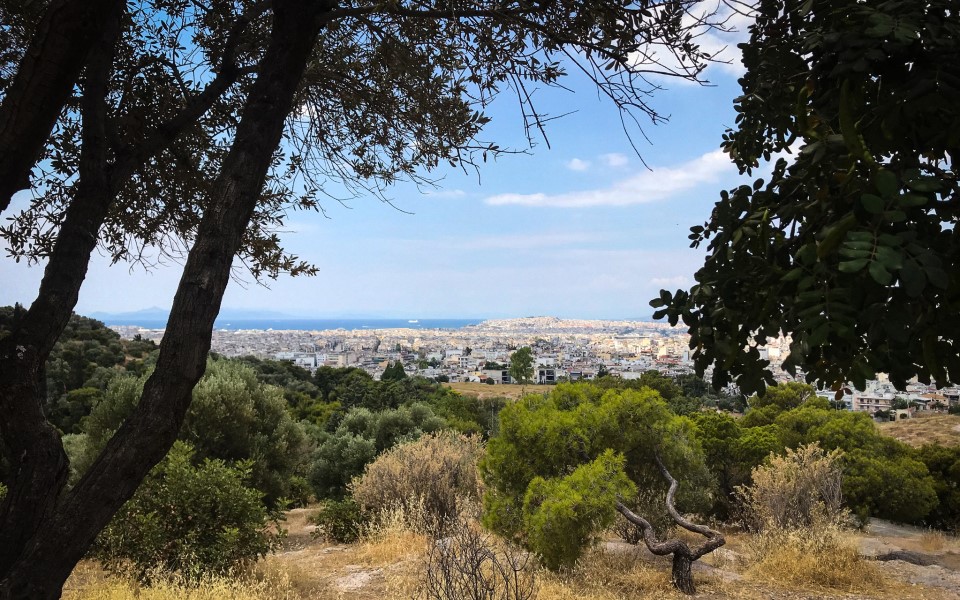If there was one thing I particularly enjoyed on my big walk up and down Athens’ historic hills, it was the sense of the landscape within the city, a sense which captivated me.
It was a sensation so unique, revitalizing and unexpected that I was filled with thoughts of what lies around us and what we allow ourselves to experience.
If you allow yourself to wander around Filopappou Hill, the Pnyx and the National Observatory of Athens, and trundle down to Thiseio and lose yourself in the surrounding alleyways, you may get to experience the greatness of Athens.
It is a greatness that exists within an inconceivable humility. A genteel humility, like a pure metal, an ancient ore.

© Nikos Vatopoulos

© Nikos Vatopoulos
I like to start this walk from the Odeon of Herodes Atticus. The entrance steps are a good place to meet friends if you plan to walk with company, but the theater is a good landmark for myself, too. It acts as both a starting place and a destination.
I know that a long walk awaits me, but this is the best season to enjoy the hills, with the first green shoots of fall – the same is true of spring, in March and April.
You don’t need to know much, nor is it necessary to have studied maps and books. If you do, so much the better, but what is most important is that you allow yourself to be moved by the harmony of nature and human creations.
It is something that is deeply affecting; here, starting our ascent towards the Hill of the Muses, also known as Filopappou Hill, it is the landscape itself that draws you upwards, like a pilgrimage.

© Nikos Vatopoulos

© Nikos Vatopoulos
From the Odeon of Herodes Atticus the sculpted paving designed by architect Dimitris Pikionis is already visible on the sidewalk and on the paths. This will accompany us to the top of Filopappou Hill, on our ascent through the pine trees and at our rest stops and viewpoints.
There are certainly an abundance of views, but first Pikionis will treat us to the kind of poetry that will not come and take you by the hand, but must be sought out. You must be open and dedicated to the task.
The network of paths around the Acropolis and the hills, which he designed in the 1950s, captures a philosophical composition, a pairing of marble, stone and concrete (yes, concrete too can be poetic).

© Nikos Vatopoulos
Walking up Filopappou Hill, we are bound to stop at the church of Aghios Dimitrios Loumbardiaris, which Pikionis reconstructed according to the original post-Byzantine design, where one can see the harmony of holy and earthly, religious and secular.
It is worth pausing by the church door to study the external masonry, which combines all the patterns of Hellenism through time, in stone and clay. Religious and secular.
Further up is an abandoned tourist kiosk, but we continue up the hill to enjoy the views of the sea and western Attica to our right, and the Acropolis to our left.

© Nikos Vatopoulos
Reward
The path itself will soon be improved as part of a cleanup campaign. Around it, we can appreciate the flora, which is the result of several plantings of local species, starting before the war and continuing to the present day.
The ascent to the Filopappou Monument rewards the visitor with a view of Athens as if the city were laid out on a plate.

© Nikos Vatopoulos
Filopappou Hill (Hill of the Muses) – Pnyx – National Observatory (Hill of the Nymphs).
The hills surrounding the Acropolis form a vast park, an open space with very discreet limits, which can take you from Makryianni Street to Thiseio avoiding the pedestrian thoroughfares of Dionysiou Areopagitou and Apostolou Pavlou streets.
This route allows you to immerse yourself in the hills with their sanctuaries, their nymphs, their stories, their magic, the illogicality of myth and the sanctity of a personal stroll.
Descending from the Filopappou Monument, perhaps by a different path, we find ourselves again by Aghios Dimitrios Loumbardiaris. From there we go right, along the large paved path that will take us to the Pnyx.

© Nikos Vatopoulos
The route is beautifully green on both sides. Around the halfway point, we can stop for a view from above the Koile Odos, once a broad commercial street where today the wheel ruts left by ancient carriages are still visible.
A little further down, peering between the trees you can try and make out the roof of the Stavros Niarchos Foundation Cultural Center on the Faliro Delta. On a clear day, the view out to sea can be quite breathtaking (and reminiscent of Hans Christian Andersen’s account of his visit to the Acropolis).
From the large plateau of the Pnyx, the view towards Acropolis, Lycabettus and the center of Athens unfolds charmingly despite its tight density. We have reached the heart of the three hills, the heart of our route, which will lead us, after a bit more walking and after descending some narrow steps, to the Hill of the Muses and the National Observatory.

© Nikos Vatopoulos
Before we set eyes on the elegant National Observatory (which its architect Theophil Hansen ordered remain untouched, “Servare Intaminatum“), we see the idyllic administration building surrounded by gardens, a 19th-century urban interlude in amongst the ancient marble.
We have reached the perimeter of the Observatory which we can see on our left, with its dome crowning the pine-covered hill. We are on the borders of Thiseio. On your right you will see beautiful neoclassical townhouses, but our route takes us to the left.
We will find ourselves with the National Observatory to our left and the church of Aghia Marina to our right. It is a beautiful spot, often windswept, otherworldly, timelessly Athenian. The path downhill leads us to the square surrounding the church.

© Nikos Vatopoulos

© Nikos Vatopoulos
The area has the flavor of a blue-and-white island square, with two-story houses dating from the interwar period, flowers and the calm of a desirable neighborhood.
We continue downhill, and at this point we can also take a detour to Akamantos Street to see more old Thiseio houses, until we reach Apostolou Pavlou Street.
There, we are faced with a dilemma: Head towards the Ancient Agora or towards the Acropolis Museum? There are no wrong answers.
This article was first published in Greek on kathimerini.gr












